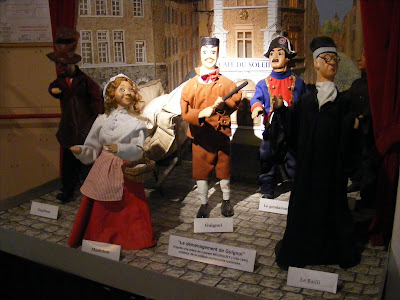As to big meals, Christmas Eve - or Day - is when the family gets together around the table. Friends will gather to welcome in the new year with a meal on the feast day of St. Sylvester, La Saint Sylvestre. And what a feast it is!
People start arriving around ten on New Year’s Eve and nibble on little appetizers and flute upon flute of champagne until everyone is comfortably caught up with the old year’s events. The meal proper starts around midnight with either an onslaught of oysters on the half shell or sometimes a complete platter of shellfish... or you could just go with the tried and true smoked salmon. That’s followed by the inevitable foie gras, with or without truffles. Then you move on to the fish dish: often a whole fish, poached, such as a turbot or sea bass. After that you come to the plat de résistance: a roasted meat such as turkey or roast beef. Any vegetables served with the meat will probably be either green beans with almonds, or else a pureed something (celeriac, turnips, chestnuts...). With the finish line in sight, you move on to a salad, then the cheese platter and finally a bûche (Yule log) or other ice cream-based dessert such as a baked Alaska, which they call omelette norvégienne (although I’m not sure it really came from Norway originally). And coffee, of course, as it’s usually about 3 or 4 a.m. by then!
Somewhere in all that came the famous trou normand, an apple sherbet a-swim in calvados, a particularly potent apple brandy from Normandy. It is reputed to open up the appetite for the remaining rounds. No mean feat, but it does help.
This month’s recipe - bouchées aux fruits de mer - is somewhat like a vol au vent, and a traditional favorite for festive occasions. So try it to start out what I hope will be a very Happy New Year!
N.B. The seafood in this recipe is mussels, small shrimp and calamari. If you have a last minute situation, you can use frozen, especially as I already use frozen puff pastry shells. It makes for a delicious yet fast appetizer!
For 4:
- 1 lb (450 g) seafood
- 4 oz (100 g) small mushrooms, sliced
- 1 can lobster bisque
- 2 T butter + some more to sautée the mushrooms
- 1 T flour
- 1 T cognac
- salt
- pepper
- nutmeg
- If using frozen seafood, defrost it in advance.
- If the puff pastry shells are frozen, follow the instructions on the box so that they are ready when the seafood filling is done. If they’re not frozen, just heat them until they’re golden.
- Meanwhile, lightly sautée the mushrooms in butter but don’t let them color more than just golden.
- Then poach them, along with the seafood, in the lobster bisque for 5 minutes. Strain them, retaining the bisque.
- Melt 2 T of butter. Add 1 T of flour and cook for 1 min, stirring well. Add in enough of the lobster bisque to make a thick sauce. Stir in the cognac and a pinch of nutmeg and simmer for 3 minutes. Salt & pepper to taste.
- Remove the top of the puff pastry shells and fill them with the seafood mix. If you have some left over, serve a bit on the side. Serve immediately.
Accompany with a dry white wine, such as a cabernet sauvignon or even champagne.























